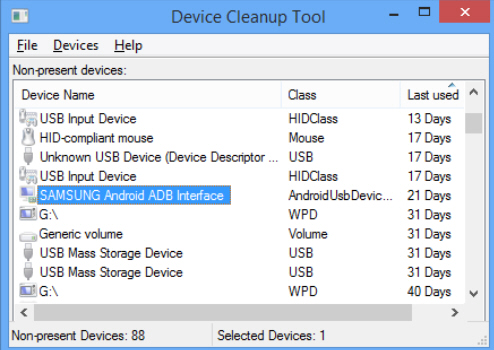What's being connected to your PC? Device Cleanup Tool explains

If you’d like to know what someone’s doing on your PC then you’ll probably start with any software traces: browsing history, recent documents, folders, whatever it might be. There are all kinds of options, and they might tell you everything you need to know.
While they’re not so obvious, hardware traces can also be extremely useful. If you could see that an unknown phone or USB key is being connected to your PC at a strange time, say, then maybe someone is using the device to copy your personal documents.
Discovering this kind of detail isn’t difficult, either, as Windows records it automatically. Every time you connect a device to your PC, its basic details are stored in the Registry, and they just remain there. Even if the device is never connected again.
You can view these records in Device Manager, but it’s not ideal. First you have to make sure they’re displayed (click View > Show Hidden Devices), and even then they’re displayed amongst all your other hardware, making them difficult to spot.
Device Cleanup Tool is a tiny (32.5KB download) tool which offers a better way. Launch the program and it displays a simple list of devices which have been connected to your PC, but aren’t right now.
Better still, there’s a "Last used" column which tells you when the device was last connected. Click to sort by time order and you’ll maybe see when your printer was last turned on, when a particular USB key was used, an Android phone, whatever the records show.
As you’ll guess from its name, Device Cleanup Tool isn’t really about this kind of forensic detail at all. It’s intended to make it easier to remove unwanted devices from the list: simply multiselect as many devices as necessary, press Del and they’re gone. (There’s not even an "are you sure?" prompt, so be careful.)
You probably won’t see any benefit from this kind of deletion, though, and we think Device Cleanup Tool’s "last used" date is much more interesting. Give it a try, see what it reveals about your PC.
